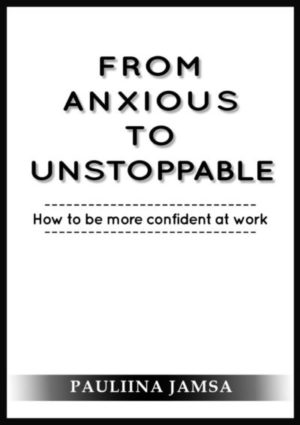Tic tac, tic tac, tic tac…
I was getting growingly nervous every minute.
I refreshed the email again and checked my mobile just in case my outlook had an issue. I went through my spam folder and outbox.
Nothing.
You know that feeling when you’re waiting for something urgent? When I say urgent, I mean something highly crucial that has a strong negative impact on your company and / or career if it doesn’t get DONE in the fastest time possible.
Well, this was one of those cases.
I refreshed the email again and started drumming my fingers nervously: a message was downloading. Come on, come on, come on…!
A GDPR newsletter.
The top 10 most annoying things you should NOT do when you need something very, very, VERY urgently:
1. Not telling when you need it by
I thought that just saying in the title that it’s urgent would be enough. Nah, it’s not. Just saying it’s urgent doesn’t mean that the person reading it knows it needs to be done that very hour or even that very day.
Tell when the task must absolutely be done in the title and on the top of the email.
2. Using fluffy timings such as ASAP or EOP
Loved using them, but everyone has their own interpretation of their meaning:
For one person ASAP means 10 minutes and for other it means a week.
EOP can mean 5pm or 9pm depending on when the person finishes work. Some think that it’s enough for you to get it the next morning when you arrive to the office.
Give an exact time, such as: Today 12th September 17:00 CET.
3. Not explaining why it’s urgent, who it’s for and what it’s for
I simply used to say I need it urgently without actually explaining the context.
Context is CRUCIAL.
Person receiving the request would LOVE to know that it’s a legal matter or request from the MEGA boss so they can prioritise their work.
You are not the only one with “urgent” requests – make sure you explain well enough why your request is the highest priority.
4. Writing an email with a long explanation and no bullet points
That being said, I then of course took it too far by writing very long emails.
Keep it short and use formatting and bullet points so the person can glance it quickly through to see what it’s about.
5. Expecting person to read the whole email chain to figure out what the question / task is
To save MY time, I forwarded the request chain and wrote: FYI please action urgently.
I’m now so embarrassed I did that.
For you it may be obvious what needs to be done, because you’ve followed the whole escalation email chain since the beginning.
However, instead of one email. you are now asking the new person to read through 15 emails to understand what it’s about, what’s the problem and what needs to be done.
Write a short recap with timings to put it in context with the action points to take.
6. Only using email
Emails accumulate and get easily lost. A young and foolish mistake I did was to send more and more pissed off reminder emails during the day.
How annoying is that. And useless.
Walk over to the person or use social (work) channels in a nice way to ask if they received your message and if they could let you know when it’ll be done.
Or even better: Agree beforehand what their preferred channel for super urgent requests is (phone, Slack, Skype, Whatsapp…?)
7. Having no patience and escalating stuff
Oh I was terrible: if I didn’t get an answer within an half an hour, I sent the same email to their colleague. It didn’t only annoy them, but wasted time as two of them started working on the same stuff simultaneously.
I also was a big fan of escalating to their superiors if I didn’t get an answer quickly. Be patient – if you do that, instead of helping you, they’ll spend more time in calls and emails. And it creates bad blood.
8. Not adding relevant assets and links
Again, this was pure laziness. I should have done the ground work and made my request as easy as possible by adding all the relevant links and assets.
If they have everything they need in one email, you avoid wasting time emailing back and forward.
9. Being the girl who cried the wolf
Everything was always urgent whether it was adding a phrase on a website or legally having to take something down.
If it’s not urgent, don’t say it is. People won’t take your urgent email seriously nor even open them, if you send too many.
10. Not saying thank you
I used to be frustrated when I finally got the answer and didn’t even respond.
That was stupid.
Yes, you might be stressed, but in the end they’ve done their best to help you out! Always be nice, polite and say thank you… or you won’t be on the top of their priority list next time.
I hope it was helpful! To be honest, sometimes I still fall back to my bad habits when I’m stressed, but before sending the email out, I try to have a little break so I can re-read it with a clear mind.
Try to avoid one of these mistakes next time: few tweaks can make such a huge difference! 🙂
Best of luck,
Pauliina
Ps. If you found this helpful in anyway, please do like this or share your thoughts in comments 🙂 Would really appreciate it!
[This is part of my challenge to share one personal failure per week to help you see you’re not alone: we all fail. I hope this will help you to get unstuck and succeed in life 🙂 ]
Related: 7 Painful lessons I learned in agile project management
Related: 4 Painful lessons I learned in project reviews

